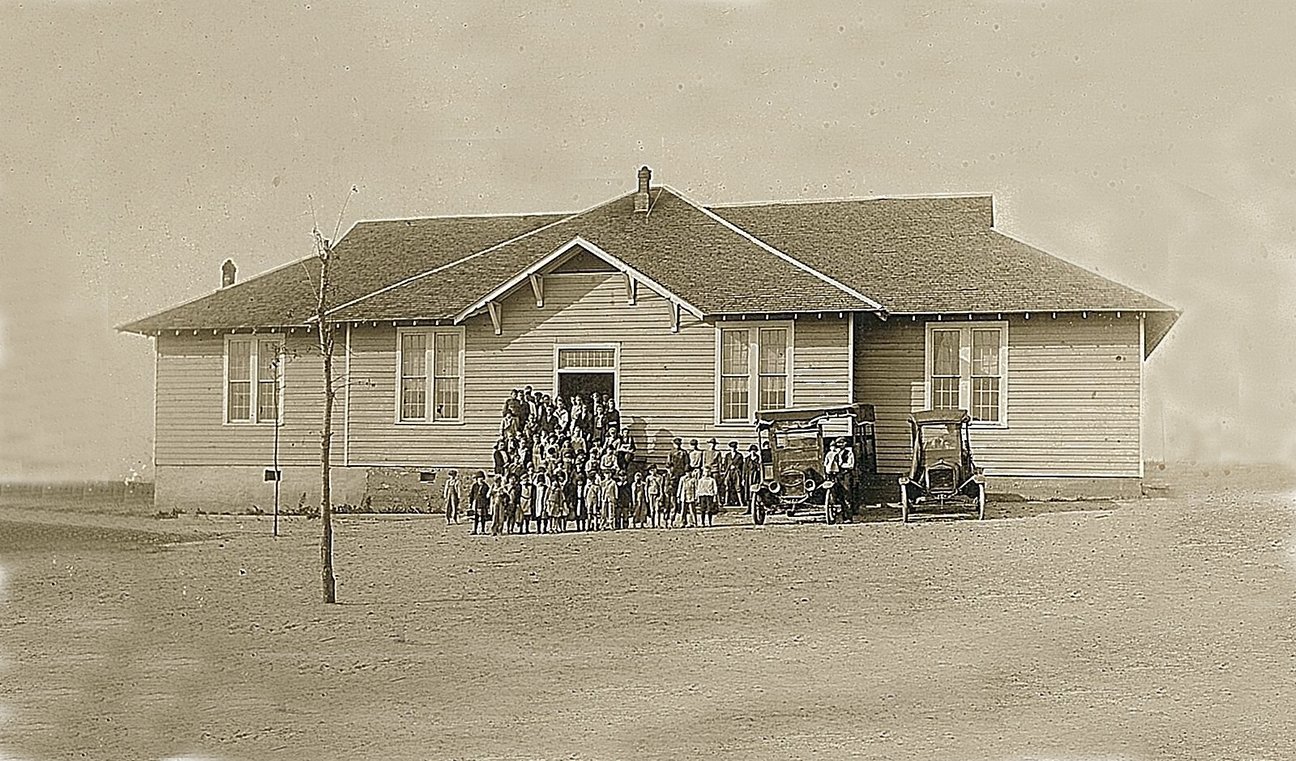
For the community
History.
It begins.
In early 1920, the Harris County Board of Education announced that a new school was to be built to consolidate four one-room schools in the area of northern Harris County, Georgia, west of Pine Mountain: Maddox near Whitesville, New Hopewell at Hopewell Church, Old Hopewell at the intersection of State Routes 18 and 219, and Central near the foot of Pine Mountain on U.S. Highway 27. A. H. Hopkins deeded 2 ½ acres to the Board for a sum of $5; C. C. Jones deeded 1 ½ acres immediately to the north, also for the sum of $5. This combined acreage was utilized for the site of Sunnyside School and it’s ballfield.
Built it.
The school was constructed in 1920 and 1921 by local community residents. The building had an electrical system run with a Delco generator on special occasions; it was converted when REA arrived in the late 1930s. Heating was by coal burning stoves, one in each room and one in the hall. The school opened for class in the fall of 1921. There were two buses for children who lived more than a mile away; other children walked or got rides in a variety of private conveyances. The four-room school housed grades one to eleven, with four or five teachers. During the 1930s the area between the school and Hopewell Church Road was leveled by the Works Progress Administration to make “The Ballfield.” Oak trees were planted along the boundaries of this area.
Closed it.
The school continued until the early 1940s, although with a decreasing number of classes. In the 1930s, high school students began attending Chipley (Pine Mountain) School. By the time Sunnyside School closed, only grades one through three were being taught there; older students went to Chipley. This was a result of the increasing number of families settling in the area as well as the decline in farming, which allowed more children to attend classes. During its early days, the school was painted a darker color with white trim.
Mobilize it.
After its closure as a school, the building was used by the Sunnyside Home Demonstration Club of the Cooperative Extension Service. Women of the community began meeting as the United States mobilized for entry into World War II. Early activities included the production of knit garments for soldiers; Mrs. Cason Callaway gave instruction and patterns for the items. After the war, the Club continued as an opportunity to meet with neighbors and engage in charitable works.
Take it.
In March 1949, the Board of Education deeded Sunnyside School to trustees of Whitesville, Midway and Hopewell communities. The deed specified that the building was no longer needed as a school because of consolidation and that it had been used as a community building since closed as a school. The people of the community received the deed because they were willing to make necessary repairs only if the title was transferred. The transfer was conditioned on its use as a community building with a clause reverting ownership to the Board if such use ceased.
Grow it.
The Sunnyside Community Club grew out of the Home Demonstration Club. The men of the community started attending meetings when they were held in the evening. The monthly dinners continue to the present time, providing an opportunity for neighbors to come together in fellowship. Much of the work of the Club has been the preservation of the building. In October 1989, the Board of Education removed the reversionary clause in the 1949 deed, and Sunnyside Community Club is now owned by the trustees of this association.
Use it.
Sunnyside School has been in continuous community use since its construction in 1920-21. In 1921, Addis Hopkins gave the 2 ½ acres to the west of the school for the construction of a church. The first sermon for Midway Baptist Church was preached in the school, and services continued there until the church building was completed in 1925. After services moved, the school building continued to be used for vacation bible school and church social activities until a few years ago. The building’s stage and auditorium continue to be used for local theatrical productions and civic meetings.
Own it.
In March 1949, the Board of Education deeded Sunnyside School to trustees of Whitesville, Midway and Hopewell communities. The deed specified that the building was no longer needed as a school because of consolidation and that it had been used as a community building since closed as a school. The people of the community received the deed because they were willing to make necessary repairs only if the title was transferred. The transfer was conditioned on its use as a community building with a clause reverting ownership to the Board if such use ceased.
Save it.
In September 1999, the school building along with the adjacent Midway Baptist Church and cemetery were listed on the National Register of Historic Places as the Sunnyside School, Midway Baptist Church and Midway Cemetery Historic District. The recognition of the architectural and historical significance of the school building has assisted in its preservation and renovation.
Share it.
The continuing mission of the Sunnyside Historic Foundation is the preservation of Sunnyside School through fund raising from bake sales, sales of its “Sunnyside Community Cooks” cookbook and use of the building as a Community Resource by local groups and private individuals.